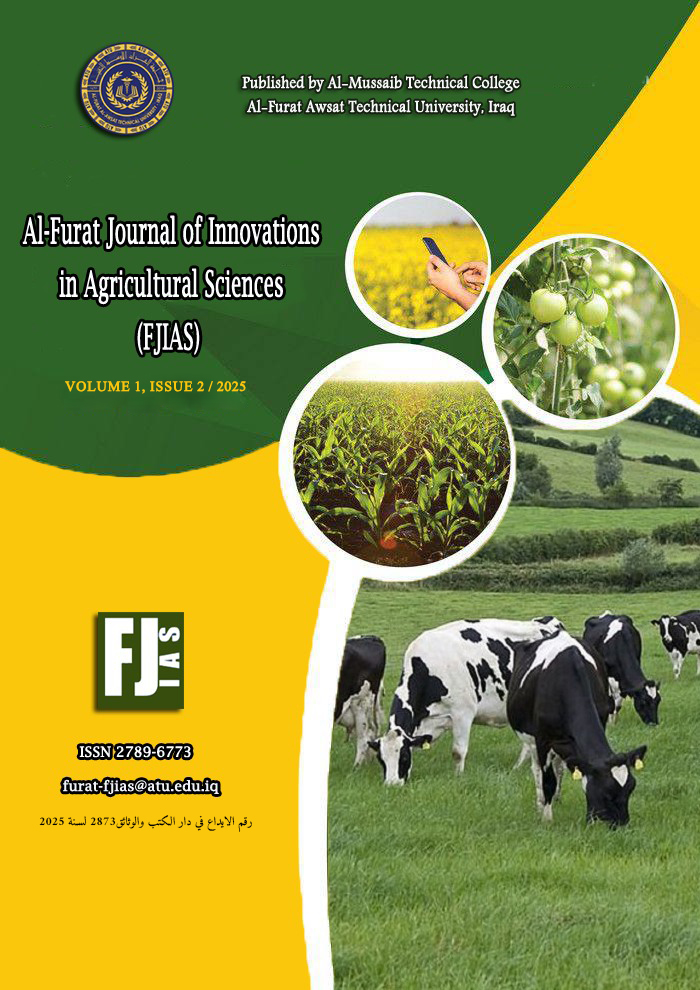Effect of Bacillus Thuringiensis and Sulfur on the Life of the Great Waxworm Galleria mellonella
Keywords:
Bacillus thuringiensis; sulphur; Galleria mellonellaAbstract
This study included the effect of Bacillus thuringiensis and sulfur on the life of the larval stages of the great waxworm. 100 soil samples were collected from different regions of Babylon Governorate to investigate the presence of Bacillus thuringiensis.According to the results shown by the study, it was found that thethe best method which used was more selective in isolating bacteria an inhibitor of bacterial spores by added sodium acetate, as the number of samples that contained B. thuringiensis bacteria was 57 samples from the total samples that were examined. The results indicated that the amount of sulfur use had a significant effect on the destruction of the larvae of the great waxworm, as the concentration treatment (3 g) , reaching (85.0, 83.3% and 80.05%) after 48, 76 hours and a week, respectively. The results of the current study indicated that the use of different concentrations of B. thuringiensis had a significant effect on the destruction of the larvae of the great waxworm, as the concentration treatment (10-2 g/ml-1) significantly outperformed all the concentration treatments used in the research experiment. The highest rate (83.3, 84.95 and 85.0%) after 48, 76 hours and a week, respectively. The results showed that there were significant differences between its treatments caused by the two factors of the study (concentration - treatment method), as the interaction treatment (concentration 10-2) with direct spraying achieved the highest rate for this trait of (90.0%) . The treatment of direct spraying outperformed the treatment of mixing with food, as it achieved the highest rate for the mentioned trait of (79.9%), while the treatment of mixing with food gave the lowest rate for this trait of (63.3%).




